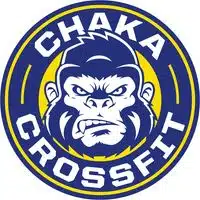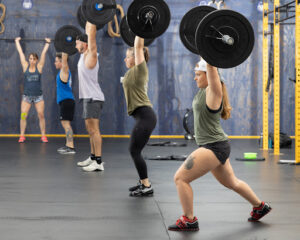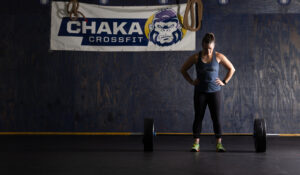Most CrossFit enthusiasts know the importance of incorporating bodyweight workouts into their training routines. Not only are bodyweight exercises versatile and effective, but they also help improve overall strength, endurance, and flexibility. In this comprehensive guide, we will provide you with a step-by-step breakdown of the best bodyweight workouts for CrossFit, along with tips on how to perform them correctly for maximum results.
Key Takeaways:
- Bodyweight exercises are effective for CrossFit: Bodyweight workouts can build strength, endurance, and flexibility which are important components for CrossFit training.
- Variety is key: Incorporating a variety of bodyweight exercises in your CrossFit routine can target different muscle groups and prevent workout plateaus.
- Progress gradually: Start with basic bodyweight movements and gradually increase intensity or difficulty to continue challenging your body and seeing improvements in your CrossFit performance.
Understanding Bodyweight Workouts
Definition and Key Concepts
Any workout that uses the body’s own weight for resistance can be considered a bodyweight workout. This type of exercise utilizes movements such as push-ups, squats, burpees, and planks to target different muscle groups without the need for additional equipment. Bodyweight workouts focus on improving strength, endurance, flexibility, and overall fitness levels.
Benefits of Incorporating Bodyweight Exercises into CrossFit
Bodyweight exercises are an integral part of CrossFit training as they offer a range of benefits. By incorporating bodyweight exercises into CrossFit routines, athletes can improve their functional strength, balance, and coordination. These exercises also help in developing muscle endurance and cardiovascular fitness, making them a vital component of a well-rounded training program.
To fully reap the benefits of incorporating bodyweight exercises into CrossFit, athletes should focus on mastering proper form and technique. This will not only prevent injuries but also ensure maximum engagement of the targeted muscles. By including bodyweight workouts in a CrossFit regimen, athletes can enhance their overall performance, adaptability, and resilience, leading to better results in competitions and daily life.
Types of Bodyweight Exercises for CrossFit
One of the key components of a successful CrossFit workout routine is mastering various types of bodyweight exercises. These exercises focus on using your body weight as resistance, allowing you to build strength, endurance, and flexibility. The beauty of bodyweight exercises is that they can be done anywhere, making them ideal for a CrossFit program that values functional fitness and versatility.
- Push-ups
- Pull-ups
- Dips
- Handstand push-ups
- Planks
Upper Body Exercises
As far as upper body exercises for CrossFit, movements like push-ups, pull-ups, dips, and handstand push-ups are excellent choices. These exercises target muscles in the arms, shoulders, chest, and upper back, helping you develop strength and stability for various CrossFit movements. Incorporating these exercises into your routine can improve your overall upper body strength and endurance, which are necessary for performing well in CrossFit workouts.
Lower Body Exercises
While upper body exercises are crucial for a well-rounded CrossFit routine, lower body exercises are equally important. Movements like squats, lunges, and box jumps focus on strengthening the muscles in your legs, glutes, and lower back. These exercises help improve your speed, power, and agility, which are necessary for performing movements like deadlifts, cleans, and sprints in CrossFit workouts.
With a focus on lower body exercises, you can enhance your overall athletic performance and reduce the risk of injuries related to imbalances or weaknesses in the lower body muscles.
Core Strengthening Exercises
Core strengthening exercises are vital for improving stability, balance, and overall performance in CrossFit. Movements like sit-ups, Russian twists, and hollow holds target the muscles in your core, including the abdominals, obliques, and lower back. A strong core is necessary for maintaining proper posture, generating power in movements, and preventing injuries during intense CrossFit workouts.
For instance, incorporating core strengthening exercises into your routine can help you perform movements like overhead squats, kettlebell swings, and handstand walks more effectively. By strengthening your core muscles, you can enhance your overall athletic performance and reduce the risk of injuries related to poor core stability.
Full-Body Compound Movements
Exercises that involve full-body compound movements are a staple in CrossFit workouts. Movements like burpees, thrusters, and mountain climbers engage multiple muscle groups simultaneously, providing a comprehensive workout that improves strength, endurance, and cardiovascular fitness. These compound movements mimic real-life functional movements, making them ideal for CrossFit athletes looking to enhance their overall fitness levels.
By incorporating full-body compound movements into your routine, you can challenge your body in new ways, improve your coordination and agility, and burn a significant amount of calories in a short amount of time. These exercises are a great way to push your limits and test your physical capabilities in a CrossFit setting.
Factors to Consider Before Starting
To ensure a successful start to your bodyweight workouts for CrossFit, there are several factors to consider. Taking the time to assess your fitness level, set realistic goals, and prioritize safety precautions will set you up for a rewarding CrossFit experience. It’s necessary to approach your training with a well-rounded understanding of these factors to optimize your progress and prevent injuries.
Fitness Level Assessment
- Any new fitness regimen should begin with a thorough assessment of your current fitness level. Consider factors such as strength, flexibility, endurance, and overall health. This will help you tailor your bodyweight workouts to your specific needs and abilities.
Setting Realistic Goals
- Even before you start your bodyweight workouts for CrossFit, it’s crucial to set realistic and achievable goals. Whether your aim is to improve strength, lose weight, or enhance overall fitness, having specific targets will keep you motivated and focused.
Plus, setting realistic goals allows you to track your progress effectively and make adjustments to your workout routine as needed. Remember that progress takes time, and it’s necessary to celebrate small victories along the way to stay motivated and committed.
Safety Precautions and Injury Prevention
- While engaging in bodyweight workouts, safety should always be a top priority. Pay close attention to proper form and technique to avoid injuries. Incorporate warm-up and cool-down exercises into your routine to prevent muscle strains and promote flexibility.
Setting a solid foundation of safety precautions will not only protect you during workouts but also ensure a sustainable fitness journey in the long term. If you’re unsure about any exercises or techniques, don’t hesitate to seek guidance from a certified CrossFit trainer or fitness professional.
Step-by-Step Guide to Bodyweight Training
Now, let’s break down the imperatives of bodyweight training in a step-by-step guide. This form of exercise is fundamental in CrossFit and can be performed anywhere, making it accessible to all fitness levels.
Warm-Up Routines
| Dynamic Stretches |
An effective warm-up routine should include dynamic stretches like arm circles, leg swings, and hip rotations to increase blood flow and flexibility. |
| Cardiovascular Exercises |
Incorporate movements such as jumping jacks, high knees, or a light jog to raise your heart rate and prepare your body for the workout ahead. |
Progressions and Regressions for Different Exercises
Any effective bodyweight training program should include progressions and regressions for different exercises to cater to varying fitness levels. Progressions involve making an exercise more challenging, while regressions make it easier.
Progressions can include increasing the range of motion, adding resistance, or performing the exercise on an unstable surface. Regressions, on the other hand, may involve reducing the range of motion, using assistance like bands, or modifying the exercise to a simpler version.
Structuring Your Workout: AMRAP, EMOM, and Rounds for Time
An imperative aspect of bodyweight training is structuring your workout using concepts like AMRAP (As Many Rounds As Possible), EMOM (Every Minute On the Minute), and Rounds for Time. These formats help to challenge your endurance, strength, and mental toughness.
Cool-Down and Recovery Practices
After a rigorous bodyweight workout, it’s crucial to incorporate a cool-down routine to aid in muscle recovery and reduce the risk of injury. Stretching exercises like yoga poses, foam rolling, and gentle movements can help your body transition from exercise to a state of rest.
Workout recovery practices such as hydrating, refueling with a balanced meal, and getting adequate sleep are also vital components to support your body’s adaptation and growth after a challenging workout session.
Tips to Maximize Your Bodyweight Training

All effective bodyweight workouts for CrossFit training require a few key tips to help you get the most out of your exercises. By following these guidelines, you can ensure that you are making the most of your bodyweight training and reaching your fitness goals efficiently.
- Bodyweight workouts can be intensified by incorporating variations and progressing towards more challenging movements.
- Scaling the exercises to your current fitness level is vital to prevent injuries and ensure steady progress.
Incorporating Variations and Scalability
Bodyweight exercises can have a significant impact on your CrossFit performance when done right. Incorporating variations like changing hand positions, altering the speed of the movement, or adding equipment like resistance bands can help target different muscle groups and prevent plateauing. Scaling your workouts by adjusting the number of repetitions or modifying the range of motion can make the exercises more manageable while still challenging your muscles. Knowing when and how to incorporate these variations and scalability techniques can keep your workouts effective and engaging.
Combining Bodyweight Exercises with Weightlifting
Little can match the benefits of combining bodyweight exercises with weightlifting in your CrossFit routine. By incorporating bodyweight movements like push-ups, pull-ups, and squats alongside weightlifting exercises like deadlifts, squats, and overhead presses, you can create a well-rounded workout that targets both strength and endurance. This combination helps improve overall muscle performance, enhancing functional fitness, and preventing muscle imbalances.
Combining bodyweight exercises with weightlifting can offer a balanced approach to your training, ensuring that you are not neglecting any muscle groups and promoting overall fitness development.
Tracking Progress and Maintaining Consistency
Maximize your bodyweight training results by tracking your progress and maintaining consistency in your workouts. Keeping a workout journal to record your sets, reps, and rest periods can help you monitor your improvements and make necessary adjustments to your routine. Consistency in sticking to your workout schedule and gradually increasing the intensity of your exercises will ensure steady progress toward your fitness goals.
Exercises
Pros and Cons of Bodyweight Workouts in CrossFit
| Advantages of Bodyweight Training | Challenges and Limitations |
|
Bodyweight workouts are incredibly versatile and can be done anywhere, making them accessible to a wide range of athletes. They also help improve balance, flexibility, and core strength, which are vital for CrossFit movements. |
Even though bodyweight workouts can be modified to suit different fitness levels, they may lack the resistance needed for muscle growth and strength gains for more advanced athletes. This could be a limitation for those looking to specifically target certain muscle groups. |
|
Another advantage of bodyweight training is the minimal equipment required, reducing the barrier to entry for beginners and allowing for cost-effective workouts. It also promotes functional movements that translate well into everyday activities. |
Challenges may arise when trying to progress in bodyweight exercises beyond a certain point, as the resistance remains constant unless modifications are made. This can plateau progress and hinder strength development over time. |
Challenges and Limitations
Challenges associated with bodyweight workouts in CrossFit include the potential for limited variability in intensity and difficulty levels. Without additional weights or equipment, it can be challenging to continuously increase the challenge of the workouts for advanced athletes.
Conclusion
Now that you have a step-by-step guide on bodyweight workouts for CrossFit, you are well-equipped to incorporate these exercises into your training routine. By focusing on movements that engage multiple muscle groups, such as push-ups, air squats, and burpees, you can improve your strength, endurance, and overall performance in CrossFit.
Remember to prioritize proper form and technique to maximize the effectiveness of each workout. Whether you are a beginner looking to build a solid foundation or an experienced CrossFit athlete aiming to enhance your skills, bodyweight workouts are a versatile and effective way to achieve your fitness goals. Keep pushing yourself, stay disciplined, and enjoy the benefits of incorporating bodyweight exercises into your CrossFit training regime. And if you’re in the Harrisburg area and looking for a CrossFit community, schedule an intro with CHAKA CrossFit!
FAQ
Q: What are bodyweight workouts?
A: Bodyweight workouts are exercises that use the weight of your own body as resistance, rather than relying on equipment like dumbbells or machines. These exercises can be effective in building strength, endurance, and improving overall fitness.
Q: How can bodyweight workouts benefit CrossFit training?
A: Bodyweight workouts are a great addition to CrossFit training as they help improve functional movements and body awareness, and can be easily scaled to different fitness levels. By incorporating bodyweight exercises into your CrossFit routine, you can enhance your strength, agility, and overall performance.
Q: What are some examples of bodyweight workouts for CrossFit?
A: Some examples of bodyweight workouts that are commonly used in CrossFit training include push-ups, pull-ups, air squats, burpees, and plank variations. These exercises target multiple muscle groups, improve cardiovascular endurance, and can be combined to create high-intensity workouts that challenge both strength and stamina.



